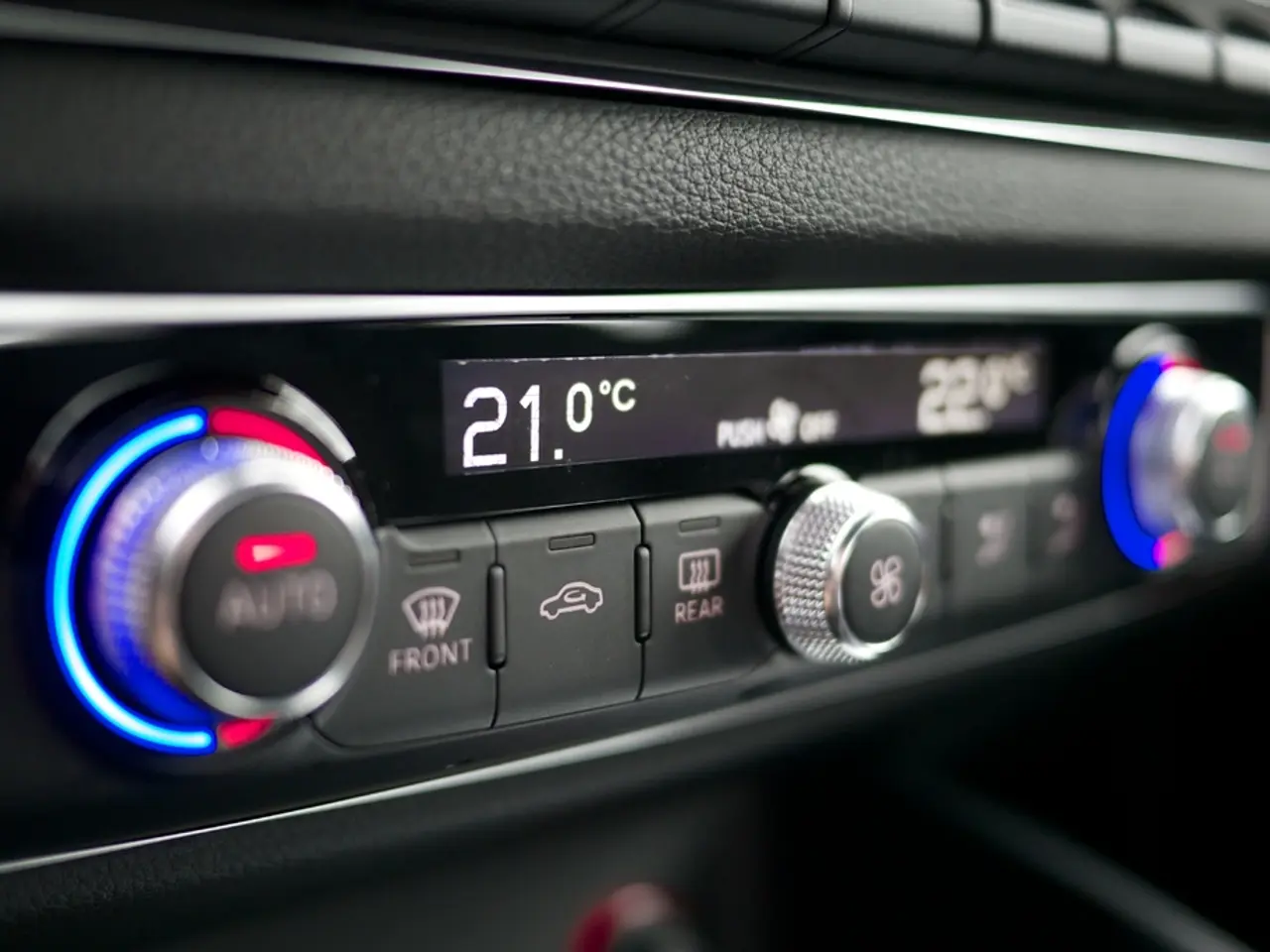Profit surge of 50% for Rolls-Royce, fueled by robust partnerships in SMR technology and commitment to net-zero emissions strategy boost stock price.
Rolls-Royce Makes Strides in Climate Leadership
Rolls-Royce, the iconic British engineering company, is making significant strides in its quest for climate leadership. The company aims to achieve net zero emissions across its operations and products by 2050, and it's doing so through a combination of innovation, efficient operations, and the use of renewable fuels.
One of the key areas of focus for Rolls-Royce is addressing Scope 3 emissions, which include those from the use of its products and purchased goods and services. In this regard, the company's Small Modular Reactor (SMR) program is making substantial progress.
The Rolls-Royce SMR, a 470 MWe pressurized water reactor designed for over 60 years of consistent, emission-free baseload power, has recently achieved several significant milestones. In July 2024, the SMR design passed Step 2 of the UK’s Generic Design Assessment process, a key regulatory hurdle indicating safety and feasibility progress.
The UK government’s Low Cost Nuclear Challenge, led by Rolls-Royce SMR, concluded in March 2025, providing £228 million of public funding matched by over £268 million private investment. This funding will support the development of SMR technical design, cost models, and supply chain strategies for future fleet deployment.
Rolls-Royce SMR has been selected by Great British Energy as the preferred bidder to build the UK’s first SMR, contingent on government approval. This marks a critical step for factory-built nuclear power plants reaching the market. Internationally, Rolls-Royce SMR has partnered with Czech utility ČEZ to deliver up to 3 GW of SMR capacity and remains a top contender in Sweden’s SMR selection process.
Collaborations with technology suppliers such as Siemens Energy (for steam turbines and generators) and Westinghouse (for nuclear fuel) support the program’s technical robustness and lower costs. Furthermore, partnerships with entities like Škoda JS to manufacture key components highlight global industrial collaboration aimed at supply chain expansion.
The Rolls-Royce SMR promises significant economic, environmental, and energy security benefits. Economic forecasts estimate a potential £54 billion contribution to the UK economy from a fleet of Rolls-Royce SMRs between 2025 and 2105.
In the aviation sector, Rolls-Royce is also making strides towards a more sustainable future. Notable milestones include the UltraFan engine, a next-gen demonstrator with high fuel efficiency and SAF compatibility, and all current in-production aero engines certified to run on 100% sustainable aviation fuel. Rolls-Royce plans to use sustainable aviation fuel in tests and shift to clean power sources.
Rolls-Royce is investing significantly in future-ready, low-carbon products, aiming to ramp up R&D spending on net-zero technologies by 75% this year. The company is also working with suppliers to set net zero targets, partnering with logistics firms for low-emission transport, and promoting resource efficiency to reduce waste.
Operational emissions dropped by 5 ktCO2e, indicating a 3% decrease. However, in 2024, total Scope 1 and 2 emissions increased to 301 ktCO2e, with a 55 ktCO2e jump in test-related emissions. Despite this increase, Rolls-Royce targets a 46% emissions cut by 2030 and aims to reach net zero emissions from its operations by 2050.
In summary, Rolls-Royce's SMR program is advancing rapidly through regulatory, funding, and partnership milestones, positioning the company at the forefront of the global nuclear industry with technology that promises significant economic, environmental, and energy security benefits. In the aviation sector, Rolls-Royce is making strides towards a more sustainable future, with a focus on innovation, efficient operations, and the use of renewable fuels. These efforts directly enhance Rolls-Royce's nuclear and aviation ambitions by turning its SMR and aero engines into scalable, competitive, and exportable clean energy solutions.
- Rolls-Royce's strategy to reach net zero emissions includes not only innovative nuclear technology like the Small Modular Reactor (SMR), but also the adoption of renewable fuels in the aviation sector, as demonstrated by the UltraFan engine's SAF compatibility.
- The success of the UK government’s Low Cost Nuclear Challenge, led by Rolls-Royce SMR, has resulted in a significant investment of £496 million, combining £228 million public funding with over £268 million private investment, paving the way for the deployment of SMRs.






